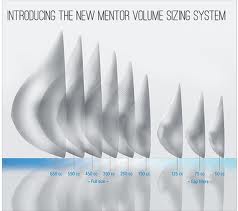One issue that women gloss over in the consideration and planning of their breast augmentation is the potential need for revisional surgery. There are many reasons a breast implant revision may need to be done including infection, bleeding, implant malposition, asymmetry, capsular contracture and unhappiness with the size selection. In reading breast implant package inserts, one can see that the estimated revision rate in the first three years after implantation can be as high as 31%.
The revision rate of nearly one in every three breast augmentation patients within three years after surgery seems incredibly high. If you asked most plastic surgeons, they would tell you that number does not match their own practice experience.
In the February 2013 issue of the European Journal of Plastic Surgery, an article was published entitled ‘The Influence of Preoperative Breast Size on Selection on the 3 Year Reoperation Rate’. This is a report of a single plastic surgeon’s experience with reoperations on a series of over 500 primary breast augmentations that were consecutively performed over a three year period. Patients were excluded from the study if they were asymmetrical and needed differently sized breast implants or underwent a simultaneously performed breast lift. All implants were placed with a dual plane approach through an inframammary incision and were of round silicone composition. The mean size of the implants was around 350cc with a range of 200c to 700ccs. There were a total of 10 reoperative patients for a 2% revision rate of more ideal breast augmentation candidates.
How did this one plastic surgeon achieve such a low reoperation rate? The hypothesis in this paper, which is ‘proven’ by the retrospective analysis of the data, is that thorough preoperative education and discussion about implant size will lower reoperation rates considerably. Since one of the major reasons for early reoperation is unhappiness with breast implant size, a preoperative method that can provide a reliable prediction of what breast size will result is invaluable. The author describes an implant sizing system that he uses.

Breast augmentation surgery is largely about size so trying to achieve what the patient wants will eliminate one of the major reasons for revisional surgery. Trying on a shaped sizer that mimics a range of implant volumes (200cc to 650ccs) will quickly and accurately find what the upper limit of volume a patient is willing to accept.
Dr. Barry Eppley
Indianapolis, Indiana


